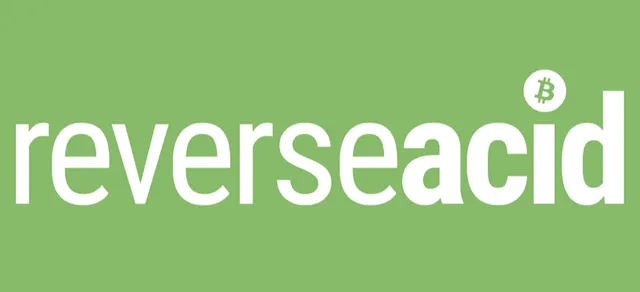In continuation with the Crypto Analysis, here is our latest piece discussing yet another platform in the space. This time we will not be analyzing a single cryptocurrency, but a broad range of them that share the same base mechanism.
A Brief Introduction to Masternodes
The advent of Blockchain has brought all sorts of intricacies and technical aspects that are being developed, debated, criticized and implemented which could not have been imagined a few years back. There isn’t a single protocol, feature or application that checks the 'must have' list of all participants, and that’s a good sign. Criticisms, most importantly, constructive criticisms are what push boundaries, stimulate innovation and bring about progress.
With bitcoin came the consensus algorithm which we now call Proof-of-Work (PoW). PoW was the first known solution to the Byzantine General’s Problem and is the mechanism that secures the bitcoin network and maintains consensus among all participants, called nodes.
As observed throughout history, when one problem is solved, it doesn’t take long for other creative minds to find faults in the solution and develop better, more efficient and innovative solutions. Proof-of-Stake (PoS), Proof-of-Importance (PoI), etc are part of this continuous criticism and improvement circle.
One such niche innovation to consensus mechanisms is the introduction of Masternodes. Masternodes are an added layer on the base layer consensus mechanisms. For instance, Dash is a privacy-based cryptocurrency that makes use of Masternodes. It is a proof-of-work based mineable cryptocurrency that, unlike bitcoin, does not give full rewards to the miners but also the nodes that validate, secure and share the blockchain.
Why consider Masternodes?
Masternodes, in a broad sense, are a sign of growth and innovation in the blockchain and cryptocurrency space. They show that constant innovation is being carried out, without necessarily putting down existing innovations.
In essence, a masternode is just like a regular node, but with an incentive attached. On the bitcoin blockchain, a miner gets rewarded to provide computation power to the network and help secure it. But the nodes, who keep a copy of the blockchain at any given moment, secure and reverify the transactions, and share the copy with other nearby nodes get no real incentive to do what they do. If someone wants to be a node, they do it because they want to, rather than actually being incentivized for it.
Whereas, on blockchains that use the masternode mechanism, such as Dash, PIVX, Energi, etc., nodes are given as much importance as the miners. The role of miners is to provide computation power to the network and help in verifying and securing the transactions, while the role of a masternode, who cements their position by staking a minimum amount depending upon the blockchain, is to collect and assemble the transactions, hold records of the blockchain, reverify the transactions, and propagate the information to all the other nodes. This divides the responsibilities and secures the blockchain two-ways. **Masternodes can be customized for both Proof-of-stake and Proof-of-Work chains. **
Due to their inherent inclusion of nodes into the incentive system, Masternodes can also be customized to carry out dozens of other features. Governance, Privacy, Voting, etc., can be carried out through the Masternodes, as they effectively help in running the network. Another proponent for Masternodes is that they can be used to keep the miners and stakers in check.
A Look into Masternode Coins
To compare masternode coins, we will take the top 4 cryptocurrencies with respect to Market Cap and at least 2 years of market penetration (as of July 2019):
1. Dash
- Consensus Algorithm: X11
- No. of`Masternodes: 4828
- Minimum Stake: 1,000 Dash
- Responsibilities of the Masternode: Masternodes are powerful servers backed by collateral held in Dash, and are designed to provide advanced services and governance on the blockchain. Masternodes host full copies of the blockchain and provide a unique second layer of services to the network, facilitating advanced functions such as InstantSend, PrivateSend and usernames on the blockchain.
2. PIVX
- Consensus Algorithm: Customized Proof-of-stake + zerocoin Proof-of-Stake Hybrid
**- No. of`Masternodes: **1421
- Minimum Stake: 10,000 PIVX
- Responsibilities of the Masternode: Other than the responsibilities of a general masternode, a PIVX masternode has to ensure total privacy of all transactional information flowing through the node. The node has to readily participate in the governance decisions of the network and is allowed to give and make changes, given consensus is achieved first. A system called the decentralized budgeting system, or more simply called as the Treasury, is also held under the purview of the masternode. It makes budgetary decisions for the network, such as marketing allocation, developer incentives, etc.
3. EtherZero
- Consensus Algorithm: Proof-of-Stake
- No. of`Masternodes: 851
- Minimum Stake: 20,000 ETZ
- Responsibilities of the Masternode: The management structure of the EtherZero Community, backed by masternodes, is designed in such a way that Community members could fully manage both the development of the community and its finances. One of the management tools is ETZVote – a system for making proposals by members of the community and voting for them. The official websites states that the main motivationfor masternodes will be the assessment that the proposals on the forum are beneficial for the growth of the coin price.
4. ZCoin
- Consensus Algorithm: Proof-of-Work
- No. of`Masternodes: 5161
- Minimum Stake: 1,000 XZC
- Responsibilities of the Masternode: A network based on the principles of the zero coin whitepaper, ZCoin is another privacy centric cryptocurrency. It is mineable, has a supply structure similar to bitcoin and, as an added feature, involves a masternode layer. The Masternodes ensure the privacy of transaction, information and anonymous voting and governance.
Conclusion:
It is quite difficult to comment on the future adoption and usage of MasterNode coins as it is quite inconclusive about how relevant they will be. Masternode based application, on paper at least, show immense value and prospect for use. But it's the users that will ultimately decide. For personnel or groups that aim to constantly engage in the network, wish to reward people who contribute time and resources and see the need for a decentralized organizational architecture can always consider the masternode architecture of the above mentioned cryptocurrencies or any other platform.
- SB
Resources:
ReverseAcid Monthly Recap
- ReverseAcid Monthly Recap - November 2018 (Vol 1)
- ReverseAcid Monthly Recap - December 2018 (Vol 2)
- ReverseAcid Monthly Recap - January 2019 (Vol 3)
- ReverseAcid Monthly Recap - March 2019 (Volume 4)
Crypto Analysis Series
- Part 1 - Basic Attention Token and How It's Revolutionizing the Internet
- Part 2 - Golem Network Token as a Potential Giant Killer
- Part 3 - Augur and the Future of Decentralized Predictions Markets
- Part 4 - Dogecoin - Such Meme, Much Value
- Part 5 - Zilliqa
- Part 6 - IOTA
- Part 7 - NEM
Previous Posts
- CELEBRATING OUR 1ST ANNIVERSARY!!!
- Is Bitcoin Really Digital Gold?
- Part 7 - NEM
- Oracles and their Inherent Censorship Problem
- Steem - A Fertile Ground for dApps Growth
- The Advent of Cryptoeconomics - Why Traditional Economics Is In Danger
- Why Do Smart Contracts Need a Blockchain
- Layer 2 Protocols: Functionality as a Mode of Micropayment
- Layer 0 Protocols: The Key to Scaling Crypto for the Masses
- Diving Deeper into Zero-Knowledge Proofs (Part 2)
- Bitcoin’s Innate Problems: Volatility and Mining Centralization
- Legislation and Taxation of Cryptocurrencies - A (Very) Brief Outlook
- CME Futures and Dealing With Volatility
- Two Men on an Island - An Introduction to Zero-Knowledge Proofs and What Follows (Part - 1)
- Why Unveiling Fake Volume is Essential for Market Growth
- Understanding the Difference Between an ‘Open-Community’ and ‘Closed-Network’ Blockchain
- Operational Difficulties in Running a Cryptocurrency Exchange
- Dharma Protocol: Tokenized Debt and Funding Through Decentralized Systems
About Reverse Acid

Be a part of our Discord community to engage in related topic conversation.

Follow our Instagram and Twitter page for timely market updates

